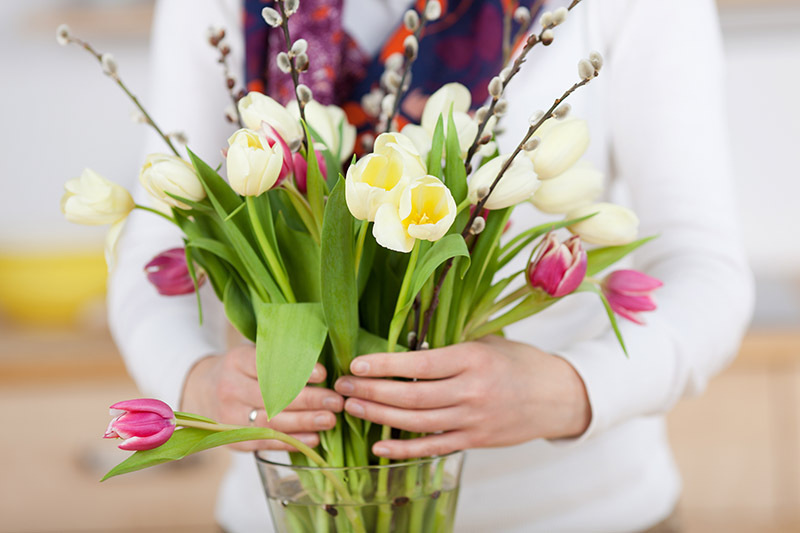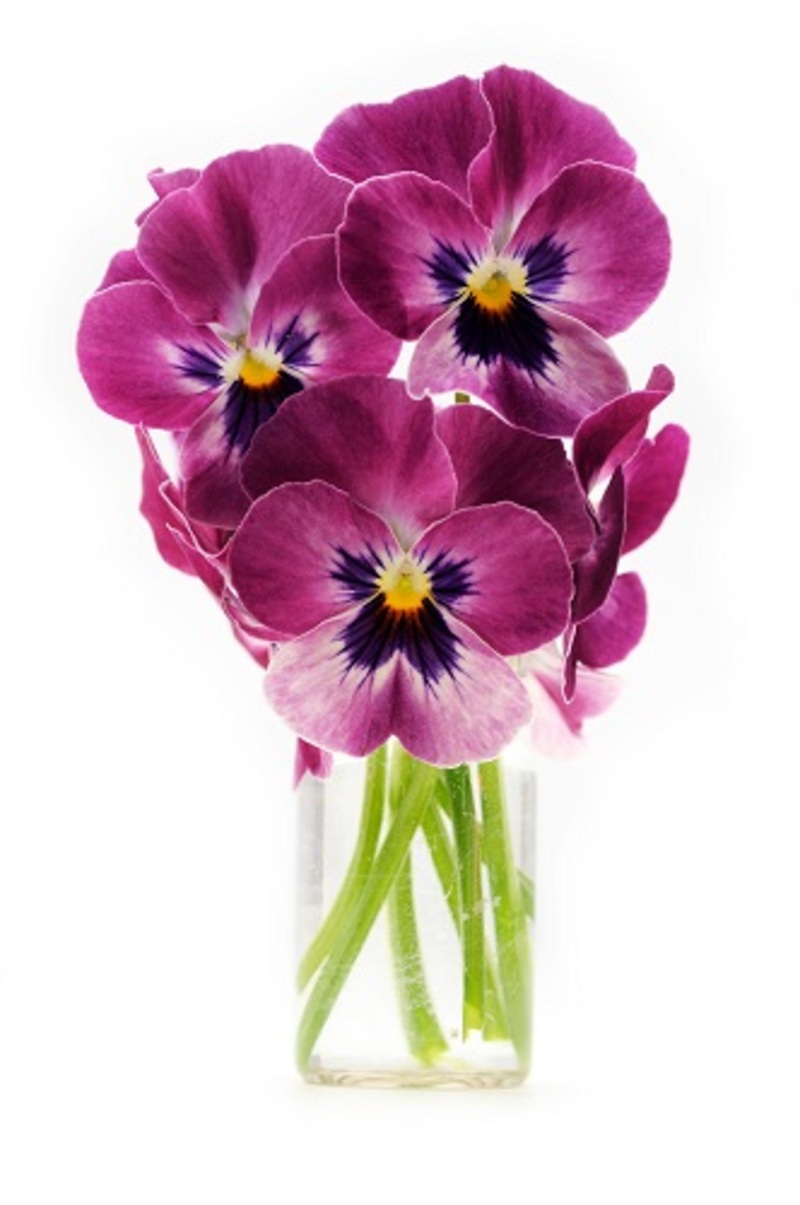Crafting a Sanctuary for Your Orchids
Posted on 29/08/2025
Crafting a Sanctuary for Your Orchids: The Ultimate Guide to Orchid Care and Environments
If you love orchids, you've likely wondered how to give them the best possible home. Crafting a sanctuary for your orchids not only boosts their health but also enhances your own sense of calm and accomplishment. This comprehensive guide explores how to design, customize, and maintain the perfect space for growing orchids at home. Discover practical advice, creative ideas, and science-backed guidance for nurturing these exotic and graceful beauties.

Why Orchids Need a Special Sanctuary
Orchids are unique among houseplants. They thrive in specific conditions that mimic their natural habitats, primarily the tropical and subtropical forests around the world. Unlike common houseplants, their roots are specially adapted to absorb moisture and nutrients from the air and surrounding debris rather than from traditional potting soil.
- Humidity Control: Orchids prefer higher humidity, typically between 50% and 80%.
- Light Needs: Indirect sunlight, mimicking dappled forest light, is best for most orchids.
- Air Circulation: Steady, gentle airflow keeps roots healthy and prevents fungal issues.
- Temperature: Stable, moderate temperatures (60-80?F) are vital for blooming and growth.
By building a sanctuary for your orchids, you replicate these environmental factors, ensuring your plants flourish year-round.
Understanding Orchid Varieties and Their Specific Needs
There are over 25,000 orchid species and more than 100,000 hybrids! Each has its own preferences, but the most commonly grown types include:
- Phalaenopsis (Moth Orchids): Popular for their ease of care and spectacular, long-lasting blooms.
- Cattleya: Known for their vibrant colors and fragrant flowers.
- Dendrobium: Appreciated for their diversity and hardy nature.
- Oncidium: Famous for their "dancing lady" flowers and adaptability.
No matter which variety you prefer, creating an orchid sanctuary starts with understanding your plants' specific lifestyle requirements.
Location, Location, Location: Picking the Perfect Spot
Determining where to keep your orchids is perhaps the most significant first step in sanctuary crafting. Here are some important considerations:
Natural Light Exposure
Orchids do not like harsh, direct sunlight. Too much sun can burn their leaves, while too little light may prevent blooms. An east- or west-facing window with filtered or sheer-curtain light works well for most orchids.
- Phalaenopsis: Prefer morning sun and indirect afternoon light.
- Cattleya: Tolerate brighter light, but still appreciate some filtering.
If natural light is insufficient, consider installing grow lights. Full-spectrum LED lights can supplement lighting needs year-round.
Climate Control and Humidity
Humidity is essential for orchid health. Most home environments, especially in winter, won't naturally provide sufficient humidity.
- Use a humidifier in your orchid space to maintain optimal moisture levels.
- Placing trays filled with water and pebbles beneath your orchid pots can also increase humidity.
- Group orchids together to create a small biome that thrives on shared transpiration.
Monitor humidity with a hygrometer to ensure it stays within the ideal range.
Air Circulation
Good air movement prevents mold and encourages sturdy growth. Small fans (set on low) can help dissipate stagnant air, but avoid blowing directly on the plants.
Temperature Consistency
Orchids generally thrive in temperatures ranging from the mid-60s to mid-80s Fahrenheit. Sudden temperature fluctuations can stress them, while warm days and cooler nights often trigger blooming cycles.
- If possible, avoid placing orchids near drafty windows or doors.
- Shield them from direct exposure to radiators or heat vents.
Essential Components of an Orchid Sanctuary
A true orchid sanctuary meets the physical and psychological needs of both the plants and their caretaker. Here's how to get started:
Choosing the Right Containers and Potting Media
- Orchid Pots: Select containers with ample drainage holes. Breathable materials like clay or plastic mesh pots provide better airflow for roots.
- Growing Medium: Standard potting soil is unsuitable. Use specialty orchid bark mixes, sphagnum moss, or coconut husks, which allow roots to "breathe."
Water Systems for Orchid Sanctuaries
- Orchids dislike being constantly soggy. Water them thoroughly but allow the potting medium to nearly dry out between waterings.
- If you own many orchids, consider a self-watering system or capillary mats for consistent moisture control.
Temperature and Humidity Equipment
- Heating mats can help maintain root warmth in colder months.
- A digital thermostat and hygrometer ensures optimal climate monitoring.
- Humidifiers, pebble trays, or misting bottles are all handy for raising humidity.
Lighting for Orchid Growth
- Install full-spectrum grow lights if your sanctuary lacks bright, indirect natural light.
- Lighting timers can automate the process, providing 12-16 hours of light per day.
Creating a Display: Aesthetic and Functional Choices
- Orchid Terrariums: For miniatures or species needing high humidity, glass enclosures work well.
- Orchid Walls: Hanging or vertical garden systems can maximize space and showcase blooms.
- Benches and Shelving: Sturdy, easy-to-clean surfaces allow for organized arrangement and maintenance.
Daily Orchid Sanctuary Routines
With your orchid care sanctuary established, regular routines are essential for maintaining healthy plants.
Watering Schedule
- Orchids prefer to dry between waterings. Insert a finger into the medium or use wooden skewers to check moisture level.
- Typically, water every 5-10 days but adjust based on pot size, season, and home climate.
Feeding Orchids
- Use a balanced orchid fertilizer diluted to half strength, applied every 2-4 weeks during active growth.
- Flush pots with plain water now and then to avoid fertilizer buildup.
Pruning and Cleaning
- Trim dead or dying flower spikes at the base to encourage new blooms.
- Wipe leaves gently to remove dust and check for pests or disease.
Monitoring for Pests and Diseases
- Inspect plants weekly for signs of mealybugs, spider mites, or scale.
- If issues are spotted, isolate affected orchids and treat with insecticidal soap or neem oil.
Personalizing Your Orchid Sanctuary
The finest orchid sanctuaries reflect the personalities of both plant and caretaker. Consider these personalization tips:
- Mix Species: Group orchids with similar light and humidity needs for dynamic displays.
- Accessorize: Decorate with attractive planters, glass domes, or even fairy lights for aesthetic appeal.
- Layout: Arrange orchids at varying heights to mimic natural glades and create visual interest.
- Add Companion Plants: Ferns, mosses, and bromeliads can create a lush, rainforest vibe.
- Inspirational Features: Incorporate water features, zen garden elements, or sculptures for tranquility.
Troubleshooting Common Orchid Sanctuary Challenges
Overwatering and Root Rot
One of the most common mistakes in orchid care is overwatering. Roots that sit in water can rot quickly. To prevent this:
- Ensure containers drain freely after each watering.
- Never let pots sit in standing water.
- Repot orchids every 1-2 years to refresh the medium and check root health.
Insufficient Light
If leaves are dark green and blooms are sparse, your orchids may not be getting enough light.
- Move orchids closer to the light source or supplement with grow lights.
- Watch for leaf sunburn; yellow or bleached leaves mean the light is too strong.
Pest Infestations
Mealybugs, spider mites, and scale insects can damage your collection quickly. Early intervention with neem oil or horticultural soap is critical.
Temperature Fluctuations
Sudden cold snaps or drafts may cause bud drop or stunted growth. Try to keep your sanctuary in a stable area, away from air conditioners or heaters.
Seasonal Orchid Sanctuary Adjustments
Your orchid growing sanctuary will need subtle changes as the seasons transition:
- Winter: Decrease watering slightly, but monitor humidity closely as indoor air dries out.
- Summer: Increase ventilation and adjust sun exposure to prevent overheating.
- Spring/Fall: Fertilize regularly, as this is peak growth and blooming season for many species.
Benefits of a Dedicated Orchid Sanctuary
There are many rewards for creating an orchid sanctuary at home. Not only do your plants thrive, but you enjoy notable advantages:
- Better Plant Health: Orchids grown in tailored conditions have increased blooms and vigor.
- Stress Reduction: Tending to your sanctuary provides a calming, meditative hobby.
- Educational Opportunity: Caring for these complex plants fosters continual learning.
- Interior Beauty: Orchids add dramatic color and exotic beauty to your living spaces.
Conclusion: Your Personal Oasis Awaits
Crafting a sanctuary for your orchids is a journey as rewarding as watching your first bloom open. With attention to location, climate, routine care, and personal touches, you'll create a haven where orchids and caretakers alike thrive.
Begin your orchid sanctuary creation today--and enjoy the beauty, serenity, and accomplishment these enchanting plants bring to your home.

Frequently Asked Questions About Orchid Care Sanctuaries
How do I know if my orchids are happy in their sanctuary?
Healthy orchids have firm, green leaves, shiny roots, and regular blooms. If your plants look perky and vibrant, you are on the right track!
Can I keep different orchid species together?
Absolutely, as long as their environmental needs align. Grouping similar species can actually create a mini-ecology that benefits all plants.
Should I mist my orchids daily?
Light daily misting can help humidity but is not a substitute for stable room moisture. Overly frequent misting can also cause fungal problems--balance is key.
How do I repot orchids safely?
Repot when roots outgrow the pot or the growing medium breaks down. Gently remove the plant, trim dead roots, and replant in fresh, suitable medium.
Final Thoughts: Create an Orchid Sanctuary That Inspires
Your orchids deserve a sanctuary as unique as their beauty. By following these tips for orchid care, environment, and display, you can achieve thriving plants that grace your rooms, purify your air, and elevate your living space. With patience and creativity, anyone can master the art of orchid sanctuary design!
Latest Posts
Crafting a Sanctuary for Your Orchids
What Does Your Birth Flower Reveal About You? Find Out Now
Valentine's Day: The Special Meaning of Red Roses Explained





